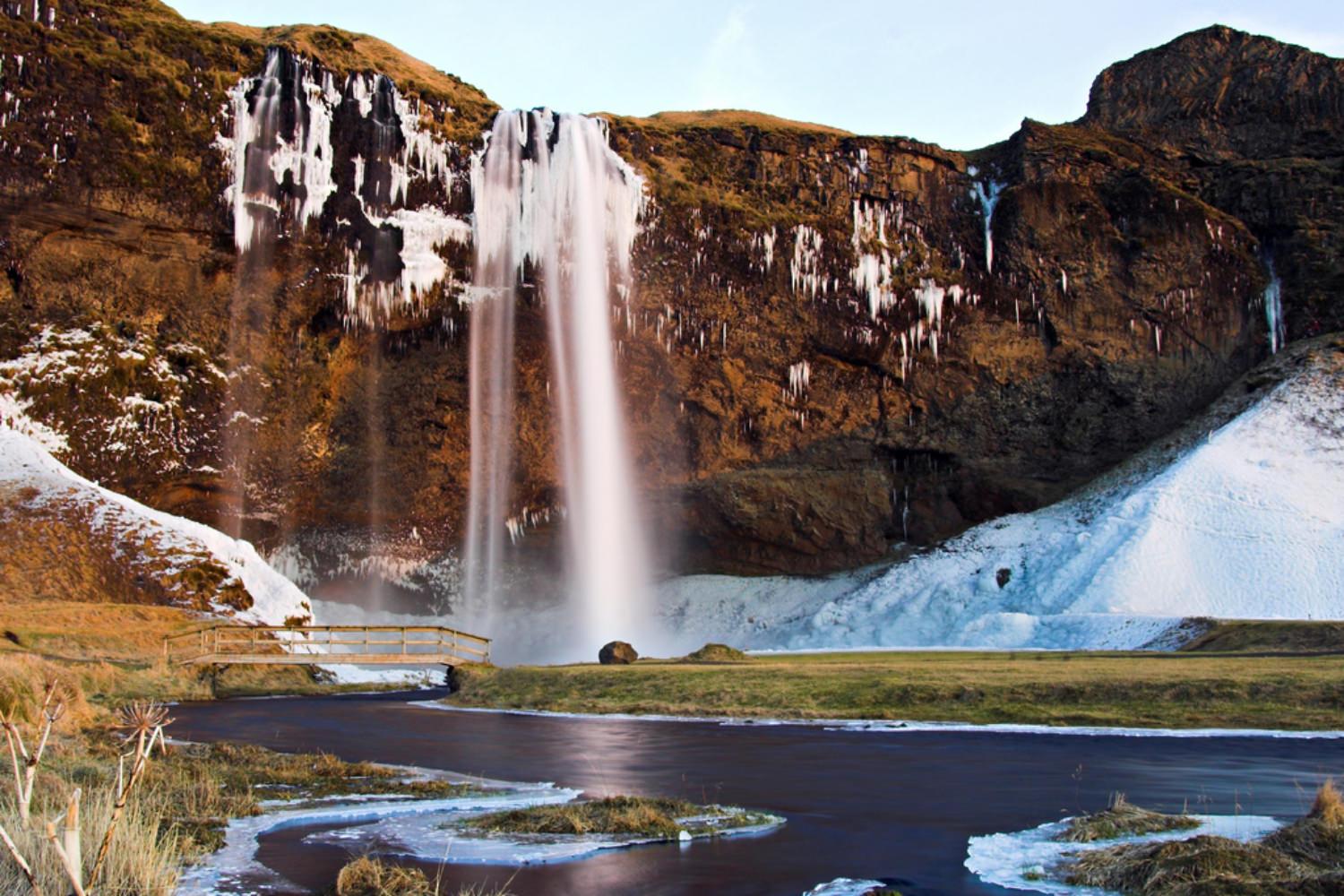Waterfalls are among my favourite nature photography subjects. Their elegance, movement, and ever-changing character make them beautiful to capture, but they do present a number of practical and technical challenges which can make them difficult to shoot.
The following waterfall photography tips will help you snap stunning images, and master the technical and creative sides of photographing this fascinating subject.
Capture Their Motion
One of the most interesting things about waterfalls is the way they move. From the meandering flow of water across rocks to the splash and spray of a crashing torrent, they're always full of energy and excitement.
Motion is a key aspect of waterfalls, so be sure to include it in your photos. Image by Paul Bica.
The key to capturing this movement is choosing the best camera settings before you start shooting. So flick your camera into Shutter Priority or Manual mode and set it up as follows.
Shutter Speed
Every waterfall is different, and there's no single "correct" shutter speed to use, but if you want to capture movement in the water you'll need to use a slow shutter speed - generally somewhere from 0.3 seconds up to several seconds.
A good rule of thumb is to start with a speed of 1 second and take a test shot. Review it on your camera's LCD screen and adjust until you get the correct level of blurring. Don't worry if the scene is overexposed; we'll adjust other settings to compensate for that.
Tripod
With such a low shutter speed you won't be able to hand-hold your camera. A sturdy tripod is an essential accessory here.
ISO
Set your ISO as low as it will go (typically around ISO 100 or so). This reduces your camera's sensitivity, allowing you to use slower shutter speeds without overexposing the scene. It also has the added benefit of reducing the amount of digital noise in your photos.
Aperture
Using your lens's narrowest aperture will again let you use a longer exposure time. It will also give you the maximum depth of field, keeping as much of your scene in focus as possible.
Filters
If you still can't get your camera to go slow enough you'll need to use some filters to reduce the amount of light that's being let in. Professional nature photographers swear by neutral density (ND) filters, which reduce the light without affecting the colours in the scene.
An excellent alternative is a polarising filter. This does the same job as an ND filter but has the added benefits of reducing reflections (for example from water, wet rocks, and leaves) and increasing colour saturation for a more vivid image.
Shoot at the Right Time of Day
Bright sunlight can easily ruin a waterfall photograph. The intense light casts strong shadows across the scene, making it difficult to get your expsosure right. It also causes hundreds of reflections in the water and wet scenery, which will show up as tiny white dots in your shot.
Avoid bright sunlight to keep your exposure even. Image by Nicholas.
To avoid these problems, shoot around sunrise or sunset (the so-called "golden hour"), when the sun's light is less intense and more diffuse. These times of day make it easier to get a more even exposure, and the reduced light means you can use a slow shutter speed more readily. Overcast days produce excellent lighting conditions for the same reasons.
Find an Interesting Composition
With all of these technical aspects to consider, it's easy to forget the creative side. Waterfalls are just like any other photographic subject, and you need to take the time to choose a striking, engaging composition.
Look for an Unusual Viewpoint
When faced with a waterfall, most people will stand right on the bank of the river, a short way downstream, and point their camera directly at the waterfall. More often than not this will result in the same uninspiring photo that we've all seen a thousand times before.
Look around for an unusual angle. Image by Jeff Smallwood.
Spend some time exploring the surroundings to find a more interesting composition. Try photographing from high above, through trees or bushes, from behind the waterfall, or from just above the stream for a more unusual and creative viewpoint.
Include Scenery or People
For all their beauty, it has to be said that a lot of waterfalls look very similar to one another, and sometimes you get the feeling that if you've seen one, you've seen them all. A great way to overcome this is to include other elements that add interest to the scene.
Include scenery and foreground objects to add interest and context. Image by Becky.
Foreground rocks, bridges, and interesting plants all help to give your photo context. This gives the viewer a better sense of the place you were in, and allows them to "explore" the scene visually, creating a more engaging shot.
Including people is one of the surest ways to add interest to a photo. Waterfalls are no exception, and a well-placed person will create a focal point that might otherwise be lacking. People are also a great way to give your photo a sense of scale.
Shoot in Landscape
Because waterfalls tend to be tall and thin, most people hold their camera in portrait orientation without even thinking. Again, this often produces a shot which is just like all the others. Holding your camera in landscape orientation may seem unnatural, but it will force you to take in more of the surroundings and be more creative with the way you frame the scene.
Shoot in landscape for a more unusual view. Image by Arnar Valdimarsson.
Waterfall photography can be a tricky subject to master. Getting the perfect shot requires patience, a methodical approach, and a certain amount of experimentation, but the impact of a well-taken waterfall photo more than justifies the time and effort you've put in.
